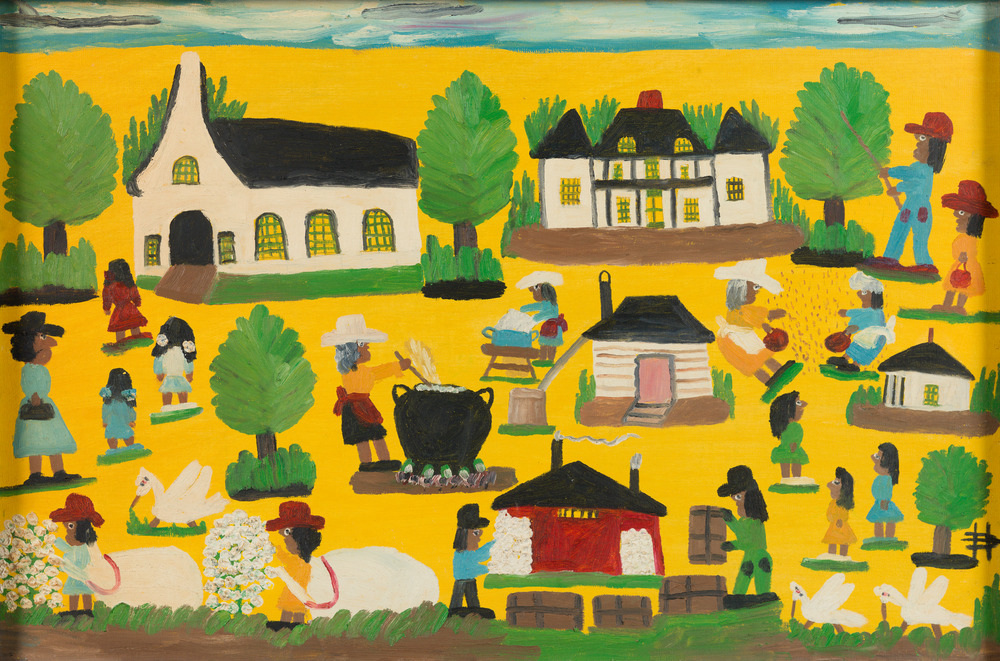
Photography by Kendra Crellin
Anne Kraybill has been on a mission to make art a common good since she began her career in museums more than 20 years ago. After serving as director of the Westmoreland Museum of American Art in Greensburg, Pennsylvania, and the Wichita Art Museum in Kansas, Kraybill became CEO of the Art Bridges Foundation, the Alice Walton-founded nonprofit that uses an art-lending network to support underfunded regional museums across the United States. Earlier this summer, she joined Walton and Ford Foundation President Darren Walker for a conversation about democratizing art access as part of the Aspen Ideas Festival. In this op-ed, she offers a personal prognosis of the state of the museum ecosystem—and explains why resource sharing is an essential part of its future.
At a time when Americans are hyper-polarized, expanding access to art is more critical than ever. Everyone—no matter who or where they are—deserves the chance to experience artworks that help them understand themselves better and encounter perspectives beyond their own. Engaging with art fosters empathy, the underpinning of any thriving community.
But there are two major obstacles to achieving this goal: Art is not equally distributed across the United States, and many collections do not represent a diverse range of artists. That’s why institutions of all sizes must collaborate and share resources to grow their impact. Art-sharing programs play a pivotal role in this effort. Most museums show a tiny fraction of their holdings at any given time; the Metropolitan Museum of Art in New York, for example, has just 4 percent on display, according to a New York Times report.
Art-sharing programs allow regional museums to show works that they might not have the resources to acquire or borrow, while enabling large museums to breathe new life into objects that would otherwise be stuck in storage. While art sharing is not a new concept, most loans are for short-term traveling exhibitions. Meanwhile, museum collections are perceived as static, with the public often saying, “I’ve already seen the collection—why do I need to go back?” Art sharing provides an opportunity to create a dynamic rotation that sparks new conversations.

American Folk Art Museum, New York, Gift of Joan Einbender, 2016. Photography by Adam Reich and courtesy of Cane River Art Corporation, with special thanks to Thomas Whitehead
One standout example of this strategy is a recent exhibition at the Memorial Art Gallery (MAG) at the University of Rochester, which borrowed eight paintings by self-taught artist Clementine Hunter from the American Folk Art Museum (AFAM) through Art Bridges's art-sharing program, the Partner Loan Network. Born on a plantation in Louisiana, Hunter began selling vibrant paintings of Black people and everyday rural Southern life in her 50s; her work left a significant mark on American art. MAG supplemented the Hunter paintings with landscapes by self-taught artists in its collection as well as examples of Inuit stone sculptures. The display was informed by the growing Black population in Rochester and challenged long-held art-world biases surrounding how artists should receive their training.
This kind of resource exchange gives museums of all sizes the opportunity to assess strengths and gaps in their collections (which have historically not adequately represented BIPOC, LGBTQIA+, and women artists) and expand their audiences by improving and making more inclusive the visitor experience.
There’s another benefit to art sharing, too: It drives philanthropic funding to museums. Younger generations are increasingly directing their charitable efforts toward outlets that create tangible change in society. Donors who recognize the arts’ ability to strengthen social cohesion through empathy and critical thinking are more likely to donate to smaller, regional institutions where the impact is visibly felt. However, it can be challenging for museums to demonstrate impact if they are under-resourced and struggling to rebound to pre-Covid attendance numbers. The art-sharing initiatives provided by Art Bridges serve as proof of concept for the impact museums can have in their communities. An equitable distribution of philanthropy ensures that well-funded and well-attended cultural institutions in major metropolitan areas can share resources with smaller museums, which can use those to encourage additional support from local donors.
Making museums sustainable for the long term requires bridging the divide between museums, communities, and philanthropists of all ages. By getting art out of storage and sharing it with institutions across the country, we can ensure that all museums have the resources they need to increase their impact and encourage social change in their communities. And, in turn, we can garner broad support from both private and public sources—carving the way for a sustainable and impactful model for the future.










 in your life?
in your life?

